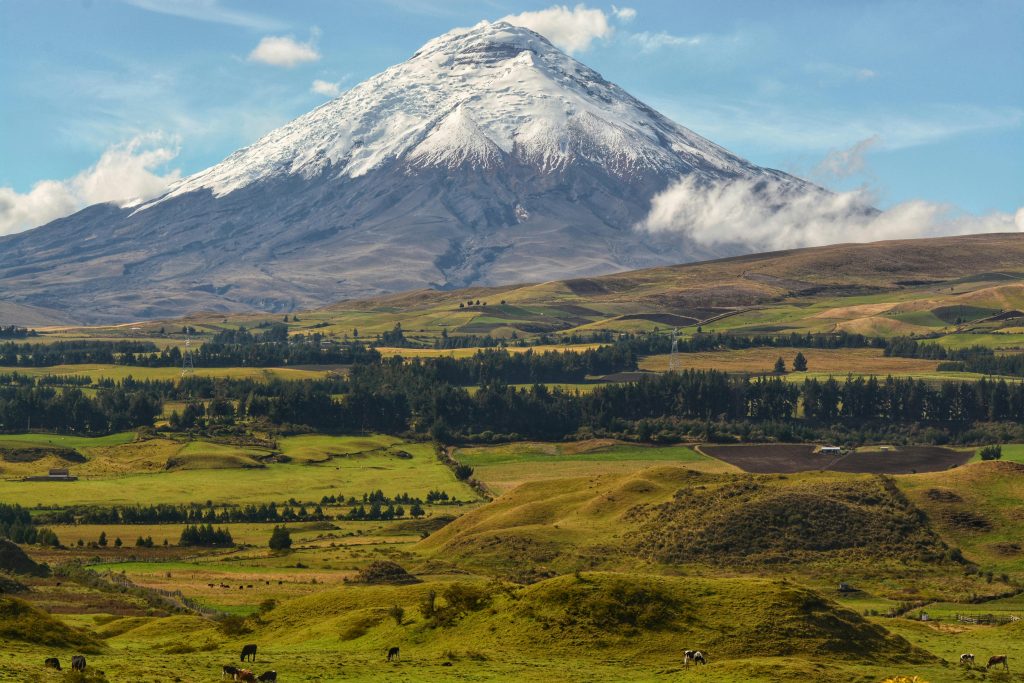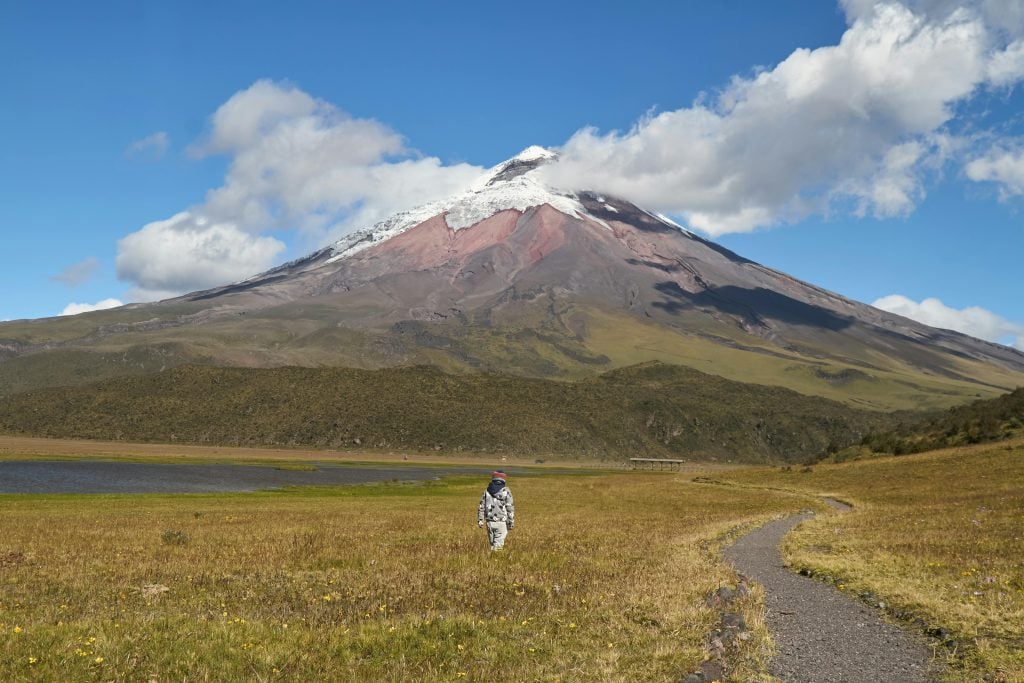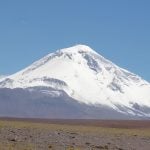Mount Cotopaxi Volcano: Ecuador’s Majestic Rising Giant
Cotopaxi Volcano, the second-highest peak in Ecuador and one of the highest active volcanoes in the world, is a breathtaking symbol of the country’s natural beauty. Towering at 5,897 meters (19,347 feet), this majestic stratovolcano dominates the landscape of the Andes Mountains. With its snow-capped cone and frequent volcanic activity, Cotopaxi is a popular destination for adventurous travelers and mountaineers. Mount Cotopaxi Volcano: Ecuador’s Majestic Rising Giant
Geological Features
Cotopaxi is a classic stratovolcano, characterized by its conical shape, steep slopes, and explosive eruptions. It is formed from layers of hardened lava, ash, and other volcanic materials. The volcano’s summit is covered in glaciers, adding to its stunning appearance. Cotopaxi has a large crater, about 800 meters (2,625 feet) in diameter and 350 meters (1,148 feet) deep.
Volcanic Activity
Cotopaxi is one of the most active volcanoes in the world. It has a history of frequent eruptions, with over 87 recorded eruptions since 1534. The most recent eruption occurred in 2015, producing ash plumes and lahars (mudflows). Scientists closely monitor Cotopaxi’s activity to predict future eruptions and warn nearby communities.
Climbing Cotopaxi
Cotopaxi is a challenging but rewarding climb for experienced mountaineers. The ascent typically takes 2-3 days and involves navigating glaciers, snowfields, and steep rock faces. Climbers must be well-prepared for high-altitude conditions and unpredictable weather. The best time to climb Cotopaxi is during the dry season, from June to August and December to January.
Cultural Significance
Cotopaxi holds cultural significance for the indigenous people of Ecuador. The name “Cotopaxi” comes from the Quechua language and means “neck of the moon,” referring to the volcano’s perfectly shaped cone. Cotopaxi is also associated with various myths and legends in local folklore.
Tips for Visiting Cotopaxi
- Acclimatize: Spend a few days in Quito or another high-altitude city before attempting to climb Cotopaxi.
- Hire a guide: Climbing Cotopaxi requires experience and technical skills. Hire a certified guide for a safe and successful ascent.
- Pack appropriately: Bring warm layers, waterproof gear, sturdy boots, and a sleeping bag rated for cold temperatures.
- Be prepared for altitude sickness: Symptoms can include headache, nausea, and fatigue. Descend if you experience severe symptoms.
- Respect the environment: Follow Leave No Trace principles and pack out all trash.
Cotopaxi Volcano is a symbol of Ecuador’s natural beauty and a thrilling challenge for mountaineering enthusiasts. Whether you’re an experienced climber or simply want to admire its majesty from afar, Cotopaxi is an unforgettable destination in the heart of the Andes.
Cotopaxi National Park

Cotopaxi National Park is one of Ecuador’s most famous nature reserves and is home to the Cotopaxi Volcano. Covering an extensive area of 33,393 hectares, the park is a perfect destination for outdoor activities such as hiking, mountaineering, and wildlife observation. The park is inhabited by various wildlife species, including llamas, Andean condors, foxes, and numerous bird species. Cotopaxi’s impressive summit and surrounding volcanic landscapes create a mesmerizing atmosphere for photographers and nature enthusiasts. Additionally, Limpiopungo Lagoon, located within the park, offers visitors a place to relax and enjoy nat
Where is Cotopaxi Mountain located?
Cotopaxi Mountain is located in Ecuador, about 50 km south of Quito.
How high is Cotopaxi Mountain?
Cotopaxi stands at an impressive elevation of 5,897 meters (19,347 feet).
Is Cotopaxi an active volcano?
Yes, Cotopaxi is one of the most active volcanoes in Ecuador, with its most recent eruptions occurring in 2021.
Can beginners climb Cotopaxi?
While Cotopaxi is a challenging climb, beginners with proper acclimatization, preparation, and a guide can attempt the ascent.
What is the best time to climb Cotopaxi?
The best climbing seasons are June to August and December to February when the weather conditions are more stable.
How long does it take to climb Cotopaxi?
The ascent usually takes about 6-8 hours from the refuge to the summit, with an additional descent time of 3-4 hours.
What wildlife can be found in Cotopaxi National Park?
The park is home to llamas, Andean condors, foxes, deer, and various bird species.
Is a guide required to climb Cotopaxi?
Yes, hiring a certified guide is mandatory for safety reasons when attempting to climb Cotopaxi.
What gear is needed for climbing Cotopaxi?
Essential gear includes crampons, an ice axe, a helmet, rope, and warm, layered clothing for extreme cold conditions.
How do I get to Cotopaxi National Park?
The easiest way to reach Cotopaxi is by car or tour from Quito, which takes approximately 1.5 hours.
The World’s 100 Highest Mountains by Country and Continent





